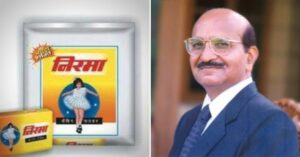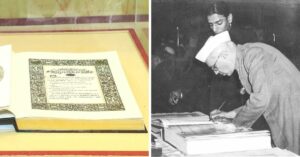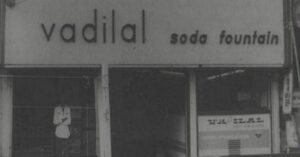An Unforgettable Typewriter That Became A Symbol of Modern India
Over the years, the history of this machine has fascinated many. This is a small attempt at documenting its interesting journey in India.

This article is part of our series, the ‘Great Indian Manufacturing’, in which we will reveal the historic success stories behind pioneering swadeshi items and brands that generations of Indians have loved through decades.
From Sachin Tendulkar to Lata Mangeshkar and even R K Laxman, Chembur-based artist Chandrakant Bhide has created portraits of several known and much-admired personalities.
No, he doesn’t use a colour palette or brushes or even a canvas!
Confused how he does it?
With the help of the iconic typewriter!
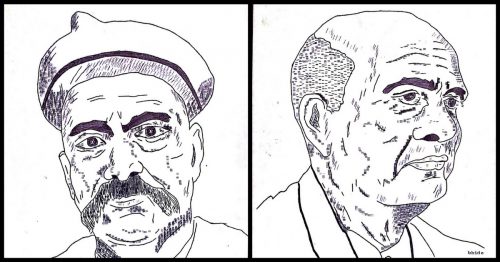
A typewriter! Who uses them anymore, you may ask.
But this humble machine that once laid the foundation of modern India has a rich history.
In an interview, Chandrakant recalls his journey to becoming one of India’s leading typewriter artists. He said, “Once my boss told me to type out an intercom list. Instead of doing it in a usual manner, I typed the list out in the form of a telephone. That was the day I decided, if I had to become an artist, I would use a typewriter as my medium.”
Chandrakant moved on to taking voluntary retirement. When he asked his company to allow him to purchase the Halda typewriter he used at work, the administration department refused.
At his farewell though, the chairman of the company gifted him the same typewriter at a meagre price of Re 1!
Ever since, the typewriter has been an inseparable member of the Bhide family.
It is not just Chandrakant whose romance with the machine survives to this date. Over the years, the history of this machine has fascinated many.

This is a small attempt at documenting its interesting journey in India.
Have you ever wondered how difficult life would be for writers and journalists of today in the 1900s when the computer was a distant dream in the country, and the iconic typewriter ruled the roost?
Your fingers had to pound the keypad, every letter with a different pressure; you had to roll in the blank sheet of paper, move the silver lever at the beginning of the sentence and type at speed without a mistake. While you did this, you had to remember to pay attention to the angelus ting of the machine when you reached the end of a line and then manually roll the typebar to move to the next line!
The typewriter may be a thing of the past. However, from opening up employment avenues for women in spaces dominated by men, to becoming a larger-than-life prop for the iconic song–‘Typewriter Tip Tip’ (Bombay Talkie) starring cabaret star Helen and actor Shashi Kapoor, this unique machine rightfully earned its place in the development of India’s modernity.
Historian David Arnold, who has extensively studied the history of everyday objects in India, writes that the ‘typewriter’ transformed the nature of office life in India.
With the dawn of the machine, the government sector, once considered exclusive and limited, suddenly had more openings than the private sector. Scribes were replaced by typists, typing schools cropped up in cities promising employment opportunities and typewriter repair experts set up shops.
The typewriter brought a new working class of citizens to the limelight–the typists.
You get a glimpse of them in Rohinton Mistry’s A Fine Balance. Set in the Bombay of the 1970s, he paints a vivid picture of pavement typists sitting cross-legged in front of their stalls outside courts and government offices. They pounded on their typewriters at mind-boggling speeds and catered to the less-educated petitioners and plaintiffs who patiently awaited their turn in queues.
While there was certainly a section of the audience that relied on typists for the documentation of letters, petitions and affidavits, the power of the typists also bothered the elites.
Arnold talks about how the Illustrated Weekly ran a report on how typists not only worked but also slept on the pavements and got their mails delivered there. Smoking and gossiping over numerous cups of tea outside the Bombay General Post Office, many were accused of blocking the roads for the passersby.
From pavement typists to novelists, journalists and even politicians, the typewriter moved on to become an important symbol of education and skill.
Most typewriters used in India in the 1940s were imported. The most popular brands being American manufacturer, Remington and Sons, as well as Hammond typewriters. Sometimes dealers also imported parts of the machine and assembled them here.
Arnold adds how Remington offered vernacular typewriters in Marathi, Gujarati, Devanagari, Urdu, Arabic, and Gurmukhi, from 1910, which made them popular in various government departments.
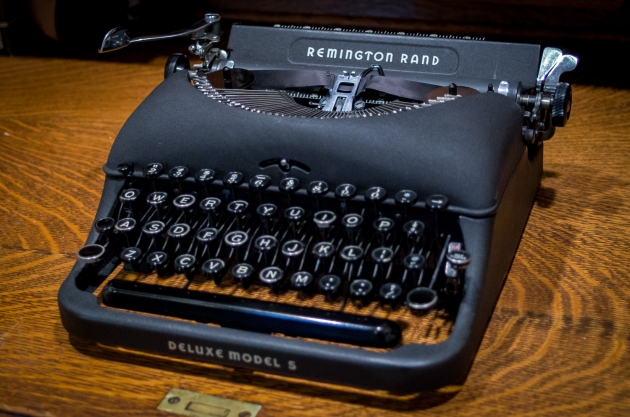
At a time when these foreign players monopolised the market, only one Mumbai-firm gathered the courage to enter the market with a made-in-India typewriter.
This company was none other than Godrej and Boyce.
It took the company almost a decade after independence and a strong belief in the Swadeshi movement to invent its own typewriting machine and release the dependence on imported technology.
The idea of locally building India’s own typewriter came into being as early as 1947, but it was delayed as Godrej and Boyce was then busy with manufacturing ballot boxes for independent India’s first general elections.
In 1955, the company created history by becoming the first enterprise in Asia to manufacture typewriters. With this,Godrej Prima was dubbed India’s first locally-made typewriter.
Arnold writes how this launch was referred to as the symbol of an independent and industrialised India by then Prime Minister Late Jawaharlal Nehru.
According to Godrej’s website, it was considered ‘a remarkable achievement for a young republic to indigenously manufacture one of the most sought-after pieces of typing equipment, given [that] it was designed and executed by Indian engineers’.
It was only a matter of time until Godrej typewriters dominated the market.
From defence agencies to courts and government offices, the company’s machines were competing with those manufactured by foreign players like Remington, Olivetti, Smith-Corona, Adler-Royal, Olympia, and Nakajima.
Against the total requirement of nearly 1,50,000 typewriters in India in the 1990s, Godrej produced almost 50,000 machines!
No wonder that it was hailed as the golden era of typewriters.
Apart from the domestic market, Godrej also exported these machines to Sri Lanka, Indonesia, Philippines, Mozambique, Angola, and Morocco.
The sound of the typewriter was no more noise but music to the ears of the typists. Perhaps that is one of the reasons why foreign counterparts that made no noise while typing couldn’t compete with Godrej’s traditionally loud typewriters.
By this time, the typewriter had also become a status symbol in India. Apart from the motorbike, it was one of the few aspirational belongings for the working class youth.
Its progressive advertisements with the tagline of “Today’s typewriter with the touch of tomorrow”, made it the much-loved all-Indian Typewriter. And it wasn’t until the turn of the century that computers threatened the existence of the humble device.
Although most of its competitors shut shop, Godrej continued its production until 2011.
Its last typewriter sold at the price of Rs 12,000, before the company closed its production plant in Mumbai. Even at the time of closure, it had a few hundred machines still in stock.
The golden era of the typewriter saw its dusk when the Godrej production plant in Pune was converted into a refrigerator manufacturing unit. But before this sun had set, Godrej had made its mark as the world’s largest producer of typewriters.
And unfortunately, the last company in the world to produce office variants.
Also Read: Chandrakant Bhide: Here is Why RK Laxman Was a Fan of this Diligent Typist
As a mark of pride in its typewriters, Godrej in 2015 commissioned its first artist-in-residence, Jeremy Mayer, to convert a batch of Arabic typewriters into sculptures.

The California-based artist, who works exclusively with typewriters, used parts sourced from 60 classic Godrej Prima typewriters (the last batch of manual typewriters manufactured in the world) and created an extraordinary 13-foot-tall installation.
Mayer assembled the installation with the help of alumni from the J J School of Arts and Raffles Design International. He welded parts to make a kinetic lotus sculpture which had 15 petals, each of which contained more than 200 parts.
The installation unfurls its petals at the beginning of the work day (9 am) and closes at the end of the day (6 pm).
The age of the typewriter may have passed, but the beautiful lotus is a good reminder of its legacy.
(Edited by Shruti Singhal)
Like this story? Or have something to share?
Write to us: [email protected]
Connect with us on Facebook and Twitter.
This story made me
- 97
- 121
- 89
- 167
Tell Us More
We bring stories straight from the heart of India, to inspire millions and create a wave of impact. Our positive movement is growing bigger everyday, and we would love for you to join it.
Please contribute whatever you can, every little penny helps our team in bringing you more stories that support dreams and spread hope.






